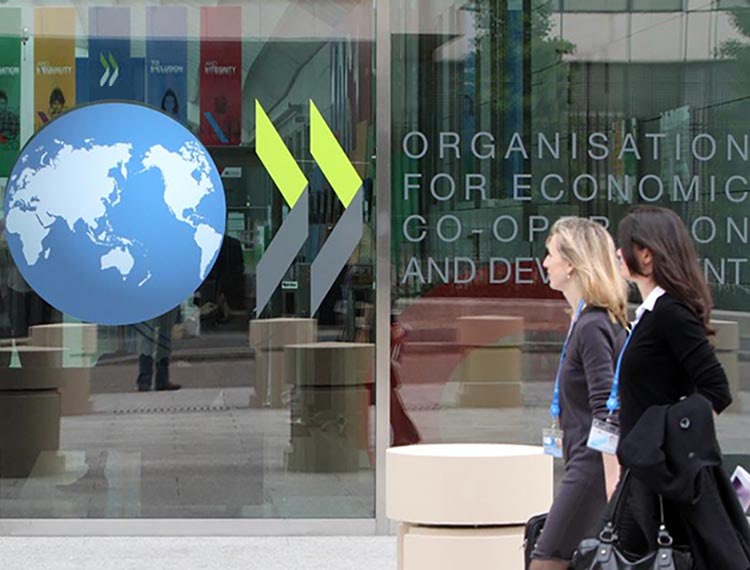Developing #wellbeing strategies for vulnerable children

To celebrate World Children’s Day, the OECD released a report on Changing the Odds for Vulnerable Children: Building Opportunities and Resilience at its conference on Building Resilience in Vulnerable Children.
The report calls on countries to develop well-being strategies that prioritise the needs of the most vulnerable.
Across the OECD, millions of vulnerable children face daily hardships ranging from poor housing and inadequate diets to maltreatment and missed opportunities to fulfil their potential and thrive. At a time of rising inequalities, the OECD is calling for a better deal for children who are worst off.
Vulnerable children need consistent, coherent and coordinated support throughout childhood. From health and education to coping with emotional problems, the right policies at the right time can reduce negative experiences and increase positive ones for children in their homes, schools and communities. It can make a lifetime’s difference, turning vulnerable children into resilient adults.
Early investment in education, health and families yields high returns later in life. Direct investments in low-income children’s health and education generate the highest pay-off, many paying for themselves in the long run through increased tax revenue and lower social transfers. This potential does not decline as children get older. Investing in vulnerable children is not only an investment in disadvantaged individuals, families and communities; it is an investment in more resilient societies and inclusive economies.
No single policy can make a lasting difference to the well-being of a vulnerable child. A combination of cross-cutting policies is needed to increase protective factors while simultaneously reducing risks. This report highlights the environmental and individual factors of vulnerability and identifies ways to reduce risks and increase protective factors, thereby helping children build resilience.
Risks to well-being
The individual factors that contribute to child vulnerability include disability, mental health difficulties, maltreatment, coming from a family with an immigrant background and out-of-home care.
Environmental factors – family and community – shape child vulnerability. Family environment, such as material deprivation, parental health and education, as well as intimate partner violence (IPV), play a crucial role in child vulnerability. Community environment, such as schools and neighbourhoods, are also major factors.
Schools and early learning, for example, have a pronounced impact on child well-being. On average, just over a third of children under the age of three participate in early learning in OECD countries, with wide variations: for example 62% in Denmark to under 3% in Mexico. However, in many countries children from low-income households are significantly less likely to participate in early learning despite evidence of its benefits, particularly for vulnerable children. This may, in part, be down to affordability. However, estimates suggest that economic returns on investment in early learning, including higher income, better health and lower crime, are significant.
Risk factors for a child can include material deprivation, parents with low levels of education, parents with negative health behaviours, lack of supportive adults, limited access to leisure activities, high neighbourhood crime and high family stress.
Protective factors can include good access to pre-natal care, particularly for vulnerable expectant mothers, well supported families, good communication between parents and children, schools that identify and assist students in need of support and child-centred and accessible child protection systems.
Vulnerable children have complex needs that may require multiple interventions at several points in time. Building resilience is not a singular policy intervention. It is an across childhood and cross-cutting policy approach.
This report outlines six key policy areas which, when taken in a coordinated and coherent way, increase the chances of childhood well-being:
-
Policies to empower vulnerable families including opportunities for parents to gain parenting skills, knowledge and resources through home-visiting and parenting programmes.
-
Policies that boost children’s emotional and social skills by enhancing the roles of schools in emotional and social well-being and providing opportunities for vulnerable children to build relationships with supportive adults through mentoring and organised sport and cultural activities.
-
Policies that enhance child protection by making child protection services more child-centred and accessible and improving after-care services for young people leaving out-of-home care.
-
Policies that increase children’s educational success, including making ECEC high quality and accessible for vulnerable children and reducing inequity in education.
-
Policies that improve children’s health such as designing pre-natal care to meet the needs of vulnerable expectant mothers as well as ensuring access to adequate nutrition.
-
Policies that reduce children’s poverty and material deprivation including ensuring social benefits reach the poorest families and removing barriers for parents in taking up work.
Children pay a high price for inequality
Over the past three decades, the increase in income inequalities in OECD countries has eroded the chances of vulnerable children overcoming early adversity later in life.
Vulnerable children face greater risks of deprivation and stress. They are more likely to struggle as adults to fulfil their economic and social potential. Vulnerability locks disadvantaged children into disadvantaged adulthood, putting the brakes on social mobility.
Children are vulnerable in different ways. From individual vulnerabilities, such as disability and maltreatment, to growing up in an immigrant family, the challenges children face can prove decisive to their experiences later in life.
Children with disabilities, for example, are twice as likely to live in low socio-economic households. A possible explanation is the effect of poor social and environmental conditions during pregnancy and early childhood on child development.
Maltreatment also plays a major role in making children vulnerable. A systematic review on prevalence rates in high-income countries estimates that over the course of one year, around 4-16% of children experience physical abuse, one in ten experience neglect or emotional abuse and over childhood 5-10% of girls and 1-5% of boys experience sexual abuse, suggesting high demand for child protection and prevention services. These estimates are on the conservative side.
Childhood exposure to IPV in the home also significantly influences child well-being, in particular health, education and emotional well-being. Some country-level studies suggest significant numbers of children have witnessed IPV at home at some point in childhood, for example in the United States 28% and in Sweden 14%. Most households with IPV contain children, particularly under-fives.
Where and how children are raised is also decisive. Children in out-of-home care – residential care and foster care – are among the groups that perform least well in terms of education, although they can catch up if they have well supported foster carers interested in their education and aspirations
Poverty and vulnerability
Poverty is also part of the vulnerability puzzle. On average, one in seven children in the OECD live in income poverty. In European OECD countries, one in five income-poor children experience food poverty. Children from low socio-economic backgrounds are up to three times more likely to develop mental health difficulties than peers from better off homes.
Homelessness, an extreme form of material deprivation, has a profound impact, over and above poverty alone. Homelessness in childhood can lead to increased anxiety, loss of contact with family and friends, poor educational outcomes, school displacement and stigmatisation.
The number of homeless families in some OECD countries is growing. It has risen significantly in England, Ireland, New Zealand and some US states. In addition, youth homelessness has increased in Australia, Ireland, New Zealand and Portugal, among others. Ireland recorded the largest increase, with a jump of 82% over just a four-year period, from 2014 to 2018. Youth homelessness grew by 20% between 2011 and 2016 in Australia and by 23% between 2006 and 2013 in New Zealand.
This is against a backdrop of rising inequality. In OECD countries, the average disposable income of the richest 10% is around ten times higher than the poorest 10%, up from seven times in the mid-1980s. The richest 10% own around 50% of all wealth and the bottom 40% own barely 3%. That inequality goes on to entrench divisions between individuals, families and communities down the generations. At the current level of intergenerational mobility, it takes on average four to five generations for children from low-income families to reach the average income.
When it comes to vulnerability of children in developing countries, the six key policy areas are valid overall. When it comes to priorities though, interventions during pregnancy, around birth, and in the early years of life are critical due to high child morality from preventable diseases and malnutrition. Investing scarce resources during these crucial years should be the absolute priority for developing countries. While there are many ways to reach children in the early years, early child development (ECD) and child health deserves particular attention.
This report puts the well-being of children at the heart of the OECD’s inclusive growth agenda. The OECD Inclusive Growth Initiative launched the Framework for Policy Action on Inclusive Growth in 2018 to help countries invest in people and places left behind, support business dynamism and inclusive labour markets and build efficient and responsive governments.
The odds are stacked against children who are vulnerable. This report makes recommendations for redressing the balance to create a level playing field. It is time to give children who are worst off a better deal.











Responses